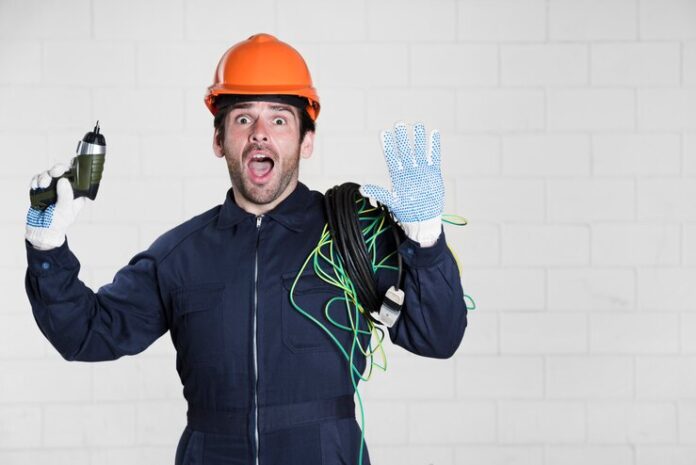Navigating the complex world of industrial equipment often requires understanding specific tools and technologies that ensure both safety and efficiency. The SP 3-872-009 Shut Down Harness is one such critical component, playing a vital role in preventing accidents and ensuring compliance with industrial safety standards. Whether you’re a seasoned professional or new to the field, understanding how this harness works and how to use it properly can make a significant difference in your operations.
Introduction to the SP 3-872-009 Shut Down Harness
In industrial settings, safety is paramount. The SP 3-872-009 Shut Down Harness is designed to enhance safety by providing a reliable system for shutting down machinery during emergencies or maintenance. This harness acts as a lifeline, connecting the operator to the machine and enabling swift actions when necessary. By understanding its purpose and significance, professionals can better appreciate the role it plays in safeguarding operations and workers alike.
The SP 3-872-009 harness is revered for its robustness and reliability. It serves as a critical component in many industries, ensuring that machinery can be quickly and safely deactivated. Given its importance, it’s essential to have a comprehensive understanding of how it functions and integrates into the broader safety systems at play within an industrial environment.
Understanding the Components
To fully grasp the utility of the SP 3-872-009 harness, it’s important to dissect its components. Each part of the harness works in tandem to provide a seamless shutdown experience. Typically, these components include connectors, wiring, and a control interface. Each piece is integral to the harness’s overall functionality, ensuring quick response times and reliable performance in critical situations.
The connectors are designed to withstand harsh industrial conditions, offering durability and long-term performance. Wiring is equally important, as it must transmit signals without fail. The control interface, often overlooked, provides the user-friendly access point for operators to engage the shutdown. Understanding these components helps users recognize the harness’s capabilities and limitations within their specific contexts.
Familiarity with the harness components enables more effective troubleshooting and maintenance. When each part is understood, diagnosing issues becomes more straightforward, allowing for quicker repairs and less downtime.
Importance of Proper Installation
Proper installation of the SP 3-872-009 harness is essential for optimal performance and safety. Incorrect installation can lead to malfunction, potentially placing operators and machinery at risk. Ensuring that the harness is correctly fitted and tested not only enhances safety but also prolongs the lifespan of the equipment.
Installation should be conducted by trained professionals who understand the specific requirements of the harness and the machinery it interfaces with. Detailed attention must be paid to securing all connections and verifying that the control interface functions as intended. Regular checks post-installation ensure that everything remains in working order.
Proper installation also involves understanding the specific environment in which the harness will be used. Factors such as temperature, humidity, and exposure to chemicals can affect the harness’s performance. By considering these environmental aspects, installations can be tailored to meet unique operational needs, enhancing overall safety and functionality.
Common Issues and Troubleshooting

Like any piece of equipment, the SP 3-872-009 harness may encounter issues over time. Common problems include wear and tear on connectors, signal transmission failures, and control interface malfunctions. Being equipped with troubleshooting knowledge can mitigate downtime and extend the harness’s usability.
Routine inspections often reveal early signs of wear, such as frayed wiring or loose connections. By addressing these issues promptly, more significant problems can be prevented. Additionally, keeping a detailed log of any repairs can help identify patterns and potential areas for improvement in maintenance practices.
Practical troubleshooting involves a systematic approach to diagnosing issues. Starting with visual inspections and moving to more technical diagnostics allows for a comprehensive understanding of the problem. Collaborating with manufacturer support or industry experts can also provide insights into complex issues that may not be immediately apparent.
Safety Best Practices
Safety should always be at the forefront when using the SP 3-872-009 harness. Implementing best practices not only protects operators but also ensures the machinery operates smoothly. Regular maintenance and inspections are crucial components of these best practices, helping to identify potential issues before they become critical.
Operators should be trained in the proper use of the harness and be aware of emergency procedures that involve its use. Clear guidelines regarding the inspection schedule should be established, detailing what components need attention and how frequently checks should occur. This proactive approach minimizes risks and enhances the overall safety environment.
A culture of safety is cultivated by encouraging open communication about the equipment’s performance and any concerns that arise. Encouraging feedback from operators can lead to improvements in both harness operation and general safety protocols. This collaborative environment supports ongoing learning and adaptation to new safety challenges.
Regulatory Compliance
In the realm of industrial safety, regulatory compliance is non-negotiable. The SP 3-872-009 harness must meet specific safety standards and regulations to be used legally and effectively. Understanding these requirements ensures that your operations are not only safe but also align with industry norms.
Familiarizing yourself with relevant standards, such as those set by OSHA or ISO, is crucial. These regulations guide the design, installation, and maintenance of safety harnesses, providing a framework for compliance. Regular audits and reviews can help ensure ongoing adherence to these standards.
Compliance extends beyond meeting legal obligations; it’s about fostering a safe working environment where accidents are minimized. By prioritizing regulatory alignment, businesses demonstrate their commitment to safety and quality, building trust with employees and stakeholders alike.
Conclusion and Call to Action
The SP 3-872-009 Shut Down Harness is more than just a safety tool; it’s a critical component of industrial operations that demands understanding and respect. By mastering its components, ensuring proper installation, and adhering to safety best practices, businesses can enhance both safety and efficiency. Regular maintenance and compliance with regulatory standards further solidify its role in protecting both personnel and equipment.

